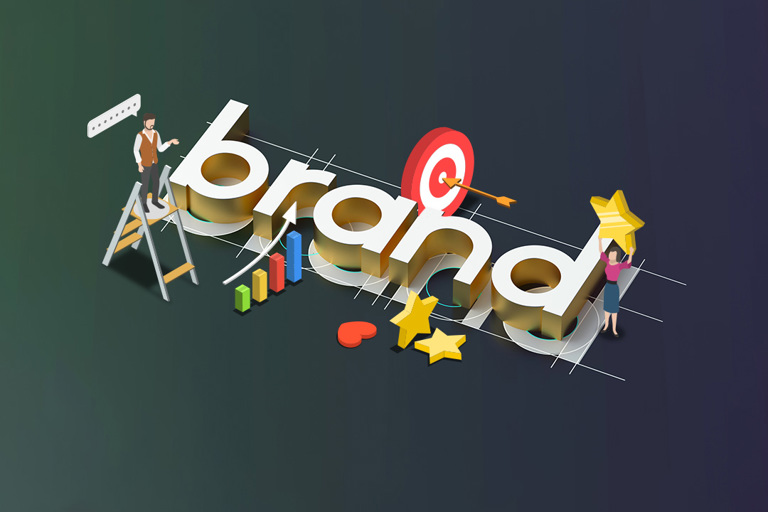Email marketing and the SCARF model: An opportunity for 2023
Emails are bringing me joy again. When I think about the great emails I read from brands, they aren’t about discounts or incentives for the most part. They are creative. They make me feel positive. And they sometimes make me spend money!
S.C.A.R.F
With email marketing revenue estimated to reach almost $11 billion by the end of this year.1 And with an estimated 4 billion daily email users worldwide,2 the opportunity for this channel is certainly significant. When I started to unpick why emails can be so effective, my thoughts neatly aligned to the SCARF model, a checklist used in behavioural science. A model, yay!
Created by neuroscientist David Rock in 2008,3 SCARF is a useful model which looks at the drivers of human behaviour, and how they might be influenced by their experience across five key areas: Status, Certainty, Autonomy, Relatedness and Fairness. It’s a great checklist for marketers.
Status
This is about humans assessing how important they are. Our sense of status matters. Email experiences can help to make the recipient feel valued by the brand by how relevant the content is to them, exclusive to them, and if they feel they’re important or being given special treatment. Email can also be used to give people the opportunity to get involved or provide feedback, helping them to feel they are a recognised member of a community.
Certainty
This relates to the people responding positively to predictability and negatively to ambiguity or unexpected outcomes. Well thought out emails can provide clear information and signposting to the detail people need to make their decisions feel more rational, remove ambiguity, and minimize the risk of regret. Emails can serve to make people feel more confident in their decision to choose one brand over another.
Autonomy
This relates to our sense of control. Signing up to email marketing is an act of agency. Well, it should be anyway. By framing the transaction as something of value, recipients feel positive about the experience and positive about the brand, because they have control over the transaction. It was their choice to sign up. And to open the email. Now we marketers can get down to making sure they don’t regret either action. It’s incredibly easy nowadays to unsubscribe.
Relatedness
This relates to our sense of safety and positivity when we feel connected to others. Email marketing offers brands an opportunity to address this cognitive need through understanding, storytelling and by fostering a sense of belonging. It can be a valuable brand experience when emails are tailored and the content demonstrates empathy. And, luckily enough, marketers have access to both the human insight, creative capabilities and technical capabilities through tools like Hubspot to ensure this plays out if done well.
Fairness
This relates to the perception of fairness surrounding an exchange. Email marketing done well is a value exchange. It must be perceived as being fair. Not only do recipients expect a valuable content experience in return for their data and time, they also expect the engagement to be rewarded fairly. This is where considered and well-placed rewards or benefits come in. Look for opportunities to continually reward recipients (without cheapening the brand or experience).
Who’s doing email well?
Famous in our industry, Oatly’s relatively recent campaign to promote its newsletters is an example of using the channel for brand building through a joined-up approach (and gathering that all important first party data). The nice, unexpected touch of placing OOH ads to promote an email newsletter adds oomph. It also signals the perceived importance of email to the brand.
Streetwear brand We are 1 of 100 (shout out to its founder ex-colleague Richie) and its newsletter “Lockdown news” which started, you guessed it, during lockdown. Ever evolving, it’s a great blend of brand content, product news and links to content the brand’s community will find inspiring, or useful. Storytelling audiences will remember and might associate their brand with. It’s community focused: Regular content that builds the relationship in a way that’s genuine and contextualises the brand in relation to the person’s world.
Clothing brand Paynter and lifestyle marketplace Glassette are two brands nailing status and relatedness. I tend to feel important when I read the Paynter emails and I’m not really sure why both brands create an intimate brand experience through email, with content that they know will resonate with audiences. Particularly great is Paynter’s use of email to welcome individuals into the community. Also, both brands are masters at incentivising and nudging sales without cheapening the brand experience.
IKEA is particularly good in the status and fairness areas, giving its IKEA Family members regular rewards, useful information and inspiration based on what they know about the recipient. Like what to do with a two- and four-year-old over the Easter holidays, with a reminder of a free hot drink and discounted meals during the week…trip to IKEA kids?!
Professionally, Sweathead’s Strategy 4 life and For Friday’s Sake! weekly newsletters are great bits of brand marketing covering most aspects of the SCARF model in some way. They’re effective because the brand understands its audience, the context and our needs. Strategists want to get better. We continually evaluate our industry’s work. We’re in our own heads a lot. But we’re interested in the world. And we love what we do. It’s extremely rare to enjoy two emails a week from a brand. But I read each one, every week.
None of these brands shy away from promoting products or services through incentives or storytelling. Rewards and incentives have their place in influencing behaviours. They’re using email as a tactical lever when appropriate. They’re harnessing the opportunity grow mental availability for the brand, increasing the likelihood that the person will remember the brand positively when they come to choose a product or service. But they’re using email strategically for something more long term, for adding value and building their brand.
Good newsletters and email content = more opportunities to stay top of mind in a way that’s influential over the long term. Particularly important for smaller brands with lighter ad budgets.
Emails: Are they just for oldies? (Like me)
The brands I’ve mentioned are probably more millennial / Gen X targeted. Which isn’t surprising - I personally enjoy their content. I cross referenced it with Global Web Index, our planning tool, which confirmed that from millennials right through to Boomers, these generations are more likely than younger generations to say they read email newsletters from brands at least once a month. And more likely to say that reading emails is a popular second screen activity while watching TV. So called "baby boomers" over-index significantly in reading newsletters. Perhaps I'm old before my time.
I asked younger colleagues and the overwhelming response was that they’re only interested in emails that offer incentives. I was directed to the Milled platform. A vault of email newsletters from brands! Scanning through the repository, I can see most brands use the channel as a performance activation. Content designed to trigger a sale among people in-market. Discount heavy and light on storytelling. Some answering the need for certainty with signposting and clear information.
Perhaps these brands have done their research and know that what their audiences are looking for from the channel transaction is the incentive. Younger audiences are perhaps not as receptive to email. Perhaps younger audiences have grown up being barraged by overwhelmingly crap emails as brands switched their attention to social. Perhaps they aren’t interested in a channel they associate their parents using? Or associate with education or work? Perhaps emails just aren’t cool, with younger audiences gravitating to social for storytelling and brand relationships. I’d need to look into these nuances a bit more.
Emails like this do grow mental availability for the brand. They keep it top of mind because the brand is never far from the top of the recipient’s inbox. But they’re perhaps missing an opportunity from a brand perspective.
A little effort to harness a significant opportunity
Of course, email marketing won’t solve all of marketing’s challenges. But it is a great little way to create moments that influence how people feel about a brand, to create added value and potentially influence their behaviour. Email offers an intimate and direct interaction between brand and recipient. And that can be quite powerful.
It takes work to get the content right. And it depends on understanding audiences, their needs and the context of your relationship with them, well. Beginning with the SCARF checklist in mind is a good place to start. With the right content marketing strategy in place, and a creative mindset to unlock ideas, we have the technical capabilities to harness email as a sophisticated marketing tool, generating personalised experiences for recipients and some serious intelligence for marketers. It’s become an exciting channel once again.
Let me know if you have any other interesting examples of emails from brands and get in touch to explore how marketing can be used to influence the way people perceive your brand, or their behaviours in relation to your brand. We can even chat about applying the SCARF model - it’s extremely useful for marketers looking to make someone’s experience with a brand, more positive!
Written by: Helen Davidson
References:
1 https://www.statista.com/statistics/812060/email-marketing-revenue-worldwide
2 https://www.statista.com/statistics/255080/number-of-e-mail-users-worldwide
3 http://web.archive.org/web/20100705024057/http://www.your-brain-at-work.com/files/NLJ_SCARFUS.pdf
Read more of our insights

Creating an Epic Campaign for The Royal Highland Show 2023
In this article, we’d like to share with you the process we took in creating The Royal highland Show's 2023 campaign and the joy it brought us working with a freelance illustrator to activate our vision.
Read more

Brand Awareness: Defining, Measuring, and implementing it into your marketing strategy
"Brand Awareness" seems quite self-explanatory. Is it only about people hearing about your brand? Our Marketing Manager, Gordon McCaw shares all the knowledge you need to create a successful brand awareness strategy.
Read more

Mediocrity: The problem with algorithms
Strategist Helen Davidson explores why algorithms, while offering obvious benefits, have led to a tendency towards mediocre content appearing on consumers' feeds.
Read more
